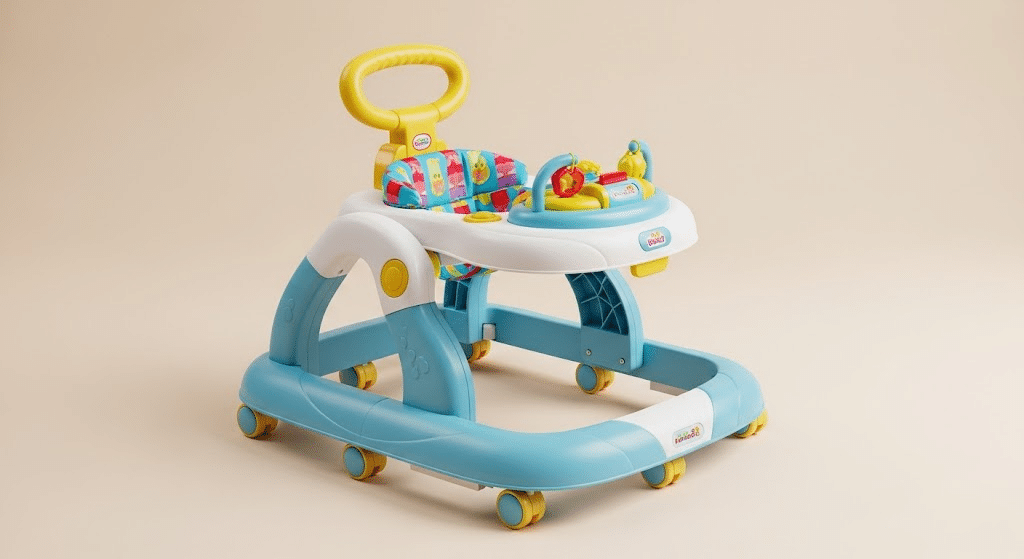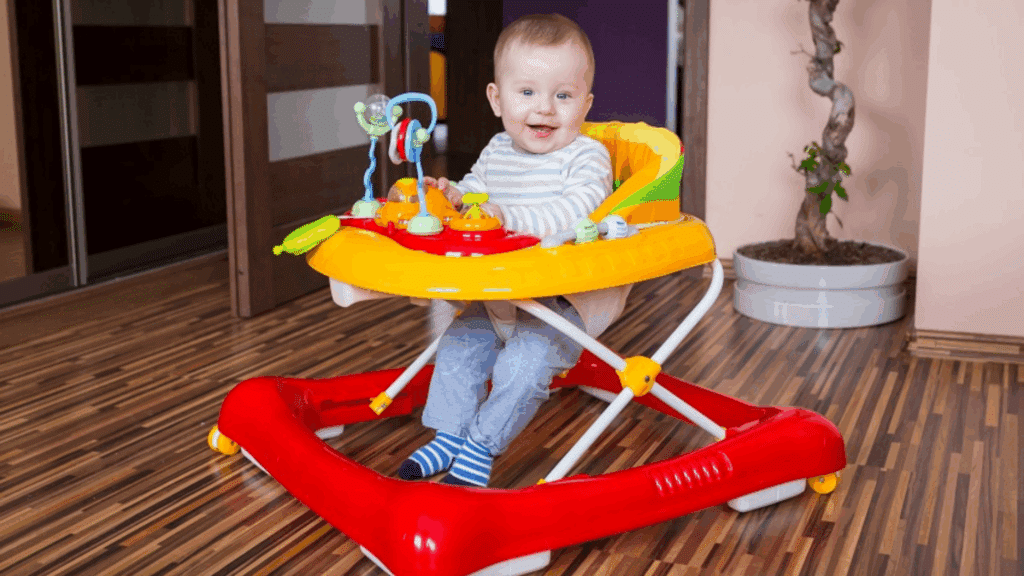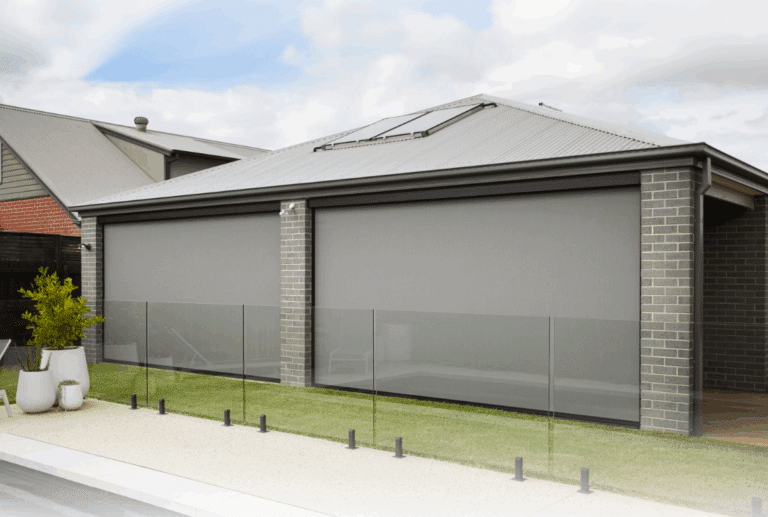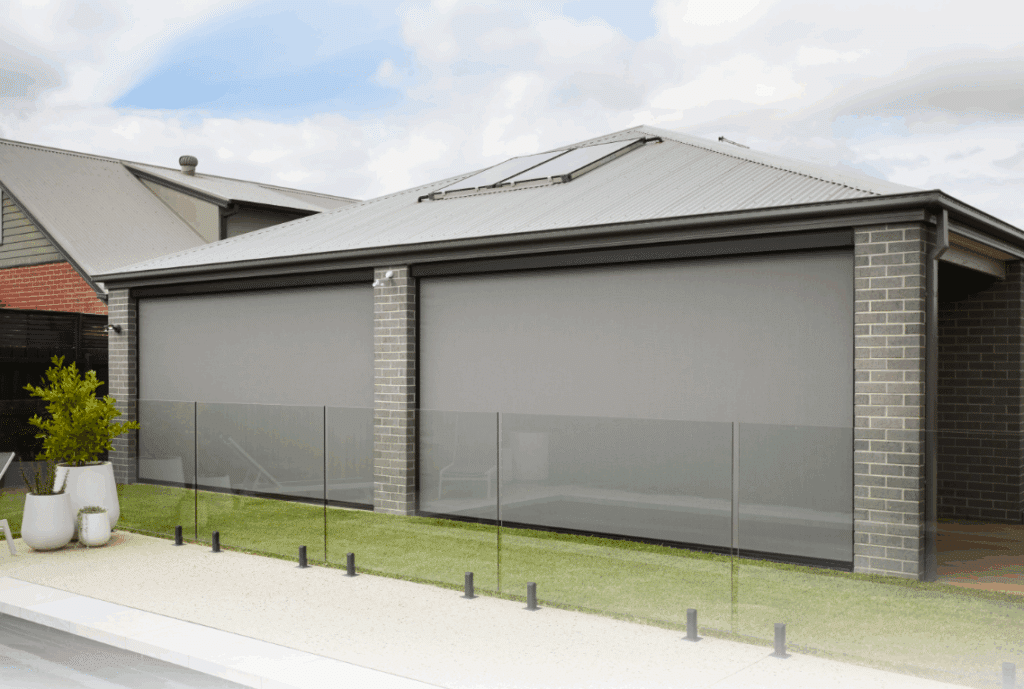Most parents feel excited when their little one starts showing signs of wanting to move around independently. You watch your baby push up, rock back and forth, and attempt those first wobbly movements.
But here’s the thing: When can a baby use a walker? Using a walker too early can actually slow down your baby’s natural development, and using it too late might mean missing the window where it could be helpful.
This blog post will walk you through the key signs that show your baby is ready for a walker and answer the question, When can a baby use a walker?
By the end, you’ll know exactly when and how to introduce a walker safely into your baby’s routine. Ready to make the best choice for your little one? Let’s get started.
When Can a Baby Use a Walker?
The question “when can a baby use a walker?” doesn’t have a one-size-fits-all answer.
Most babies can safely start using walkers between 4 to 16 months old. However, age alone isn’t the best indicator; your baby’s individual development matters more.
Ideal age range for walker use (typically 4–16 months)
The sweet spot for walker introduction usually falls between 6 to 10 months. At 4 months, most babies lack the necessary head control and core strength. By 16 months, many toddlers are already walking independently, making walkers less useful.
Here’s what typically happens at different:
- 4-6 months: Usually too early for most babies
- 6-8 months: Many babies meet the basic requirements
- 8-12 months: Peak walker usage period
- 12-16 months: Transitioning to independent walking
Key Signs Your Baby Might Be Ready for a Walker
| Signs | What to Look For |
|---|---|
| Clear Head and Neck Control | Holds head up steadily without wobbling (usually by 4–6 months). |
| Sitting Without Support | Sits upright unaided for several minutes (typically 6–8 months). |
| Interest in Standing/Bouncing | Enjoys standing with help and bounces when upright. |
| Pushes Up With Legs | Uses leg strength to push against surfaces (e.g., during diaper changes). |
| Active Engagement | Reaches for toys, follows sounds, and shows curiosity about surroundings. |
The Benefits of Using a Baby Walker
When used properly and with constant supervision, baby walkers can offer some developmental advantages. Here’s what parents might expect from safe walker use.
1. Encourages exploration and engagement
Walkers give babies access to new areas of the home they couldn’t reach by crawling alone. This expanded mobility satisfies their natural curiosity and desire to explore.
The change in perspective from floor level to standing height also provides fresh visual stimulation.
2. Builds leg muscle coordination
The pushing motion required to move in a walker helps strengthen leg muscles and improve coordination.
Babies learn to coordinate their movements to steer and propel themselves forward. This practice can contribute to overall lower-body development and motor planning skills.
3. Offers a break for caregivers (with supervision)
A walker can provide brief periods where babies entertain themselves safely while parents handle quick tasks nearby.
The attached toys and mobility keep little ones occupied for short stretches. This gives caregivers moments to prepare meals or fold laundry while maintaining visual contact.
4. Stimulates cognitive interaction with movement
Babies quickly learn cause and effect through walker use, pushing with their feet, and moving forward. They discover how different movements create different directions and speeds.
This connection between physical action and result supports early problem-solving skills and spatial awareness.
5. Provides early weight-bearing experience
The supported standing position allows babies to experience bearing weight on their legs before they can do so independently.
This early exposure to upright posture may help familiarize them with the sensations of standing and the muscle engagement required for walking.
When to Stop Using a Baby Walker

You should stop using a baby walker when your child starts taking independent steps, typically between 9 and 15 months, as continued use may interfere with natural walking development.
If your baby shows reluctance to stand or walk without the walker after 12 months, or only moves while in the walker, it’s time to reduce usage and encourage floor play.
Always check the walker’s weight and height limits, usually capped at 25-30 pounds and around 16 months, since exceeding these can pose safety risks.
Additionally, if your baby seems disinterested, fusses, tries to climb out, or prefers crawling or cruising along furniture, these are clear signs they’re ready to move on from the walker and focus on more independent movement
Alternatives to Baby Walkers for the Physical Development of the Baby
If you’re concerned about walker safety or want other options to support your baby’s development, these alternatives offer similar benefits with reduced risks.
- Stationary activity centers: These fixed-position seats allow babies to bounce, spin, and play without mobility risks. They provide the same entertainment value as walkers while keeping little ones safely in one spot. Perfect for busy parents who need hands-free time.
- Push toys (with wide, sturdy bases): Wheeled toys that babies can hold while walking offer natural support for early steps. Look for models with wide bases that won’t tip easily. These encourage proper walking posture and balance development better than traditional walkers.
- Baby-proofed floor play zones: Creating safe floor spaces encourages natural crawling, rolling, and eventually standing. Use soft mats, remove hazards, and add age-appropriate toys. This allows babies to develop strength and coordination at their own pace without artificial support.
- Montessori-style walking environments: Low, sturdy furniture pieces let babies pull themselves up and cruise safely. Think coffee tables, couches, and specially designed toddler rails. This method supports natural movement patterns while building confidence in independent mobility skills.
Tips for Safe Walker Use
Introducing a baby walker can be exciting, but safety must come first. Here are five essential tips to help minimize risks and ensure your baby’s well-being during walker use.
- Always supervise your baby closely in a walker; never leave them unattended, even for a moment.
- Limit walker use to short sessions of 15–20 minutes at a time to avoid strain and developmental delays.
- Only use the walker on flat, smooth, and obstacle-free floors; remove rugs, toys, and furniture that could cause tipping or getting stuck.
- Keep walkers away from stairs, kitchens, pools, and any uneven or hazardous areas; use safety gates to block off dangerous zones.
- Choose walkers that meet current safety standards, have wide bases and effective brakes, and check regularly for damage or missing parts.
Conclusion
Every baby follows their timeline when it comes to walking milestones.
Some take their first steps at 9 months, while others wait until 15 months; both are completely normal. Parents often wonder when a baby can use a walker, but it’s important not to rush this natural process with walkers or similar devices.
If parents choose to use a walker, following proper guidelines and maintaining supervision is non-negotiable.
However, remember that babies will learn to walk when they’re developmentally ready, with or without assistance.
Trust your baby’s natural development. Those first independent steps will happen when their muscles, balance, and confidence align perfectly. The wait is always worth it.


















